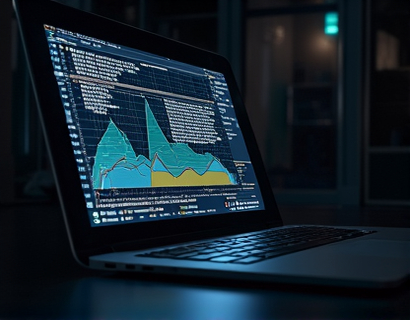Unlocking Tokenization: Advanced Smart-Contract Solutions for UCASH and U Asset Management
In the rapidly evolving landscape of digital finance, tokenization has emerged as a transformative force, offering unprecedented opportunities for asset management and security. This article delves into the advanced smart-contract solutions designed to create and manage tokens pegged to leading cryptocurrencies and digital assets, specifically focusing on UCASH and other U assets. By leveraging cutting-edge technology, these solutions significantly enhance the security and performance of financial ecosystems, providing a robust framework for asset management.
Understanding Tokenization
Tokenization refers to the process of converting rights to an asset into a digital token on a blockchain. These tokens can represent a wide range of assets, from real estate and commodities to cryptocurrencies and financial instruments. The key advantage of tokenization lies in its ability to fractionalize assets, making them more accessible to a broader audience. In the context of UCASH and U assets, tokenization enables the creation of tokens that are directly pegged to the value of these assets, ensuring stability and reliability.
The Role of Smart Contracts
Smart contracts are self-executing contracts with the terms of the agreement directly written into code. They automatically enforce and execute the terms of the contract when predefined conditions are met. In the realm of tokenization, smart contracts play a crucial role in managing the lifecycle of tokens, from creation to redemption. For UCASH and U assets, advanced smart-contract solutions ensure that tokens remain securely and efficiently pegged to their underlying assets, maintaining trust and transparency in the process.
Key Features of Advanced Smart-Contract Solutions
1. Pegging Mechanism: The core feature of these smart-contract solutions is the pegging mechanism, which locks the value of tokens to the price of UCASH or other U assets. This is achieved through algorithmic stabilization, where the smart contract adjusts the supply of tokens to maintain parity with the underlying asset. This ensures that the token's value remains stable, even in volatile market conditions.
2. Security and Transparency: Security is paramount in financial transactions, and advanced smart-contract solutions employ robust cryptographic techniques to safeguard token operations. The immutable nature of blockchain technology ensures that all transactions are transparent and tamper-proof, building trust among users.
3. Automated Settlement: Smart contracts automate the settlement process, eliminating the need for intermediaries and reducing transaction costs. This efficiency is particularly beneficial for UCASH and U assets, where timely and accurate settlements are crucial for maintaining the integrity of the financial ecosystem.
4. Flexibility and Customization: These solutions offer high levels of flexibility, allowing for the creation of various token types and customization of smart-contract parameters to suit specific use cases. This adaptability makes them suitable for a wide range of applications, from decentralized finance (DeFi) to asset management.
Benefits of Advanced Smart-Contract Solutions for UCASH and U Asset Management
1. Enhanced Security: By leveraging advanced cryptographic techniques and the immutable nature of blockchain, these solutions provide a secure environment for token management. This is particularly important for UCASH and U assets, which require a high level of security to maintain investor confidence.
2. Improved Efficiency: Automated processes and smart-contract execution reduce the need for manual interventions, speeding up transactions and lowering operational costs. This efficiency is crucial for managing large volumes of tokens and ensuring seamless asset management.
3. Increased Transparency: All transactions and smart-contract operations are recorded on the blockchain, providing a transparent and auditable trail. This transparency is essential for building trust among users and stakeholders in the UCASH and U asset management ecosystem.
4. Fractional Ownership: Tokenization enables fractional ownership of assets, making it possible for a larger number of investors to participate in the market. This democratization of access can lead to increased liquidity and market depth for UCASH and U assets.
Case Studies and Real-World Applications
Several projects have successfully implemented advanced smart-contract solutions for tokenization, demonstrating the practical benefits in UCASH and U asset management. For instance, a DeFi platform leveraged these solutions to create stablecoins pegged to UCASH, providing users with a stable and secure alternative to traditional fiat-backed stablecoins. The platform reported a significant reduction in liquidity risks and operational costs, while maintaining high levels of user trust and engagement.
Another example is an asset management firm that used smart-contract-based tokenization to create UCASH-backed tokens for institutional investors. The tokens offered a transparent and efficient way to invest in UCASH, with real-time value tracking and automated settlements. This approach not only enhanced the investment experience but also expanded the firm's client base by attracting tech-savvy investors.
Challenges and Considerations
While the benefits of advanced smart-contract solutions are clear, there are several challenges and considerations to keep in mind:
- Regulatory Compliance: Navigating the regulatory landscape is crucial, as tokenization and smart contracts are subject to varying laws and regulations across jurisdictions. Ensuring compliance is essential to avoid legal issues and maintain user trust.
- Technical Complexity: Implementing advanced smart-contract solutions requires a high level of technical expertise. Organizations must invest in skilled developers and conduct thorough testing to ensure the reliability and security of the smart contracts.
- Market Volatility: While pegging mechanisms help stabilize token values, they are not immune to market volatility. Sudden changes in the underlying asset's price can impact token value, and users should be aware of these risks.
Future Trends and Innovations
The future of tokenization and smart-contract solutions is promising, with several trends and innovations on the horizon:
1. Interoperability: As different blockchain platforms continue to integrate, the ability to transfer and manage tokens across various ecosystems will become more seamless, enhancing the utility of UCASH and U assets.
2. Scalability Solutions: With the growing adoption of tokenization, scalability will remain a key focus. New consensus mechanisms and layer-2 solutions are being developed to handle higher transaction volumes efficiently.
3. Enhanced User Interfaces: User-friendly interfaces and applications will make token management more accessible, attracting a broader audience and fostering greater adoption of UCASH and U assets.
4. Integration with Traditional Finance: Bridging the gap between decentralized finance (DeFi) and traditional financial systems will open new opportunities for UCASH and U assets, enabling more comprehensive asset management solutions.
Conclusion
Advanced smart-contract solutions offer a powerful framework for tokenization, transforming the way UCASH and U assets are managed and traded. By ensuring security, efficiency, and transparency, these solutions enhance the overall performance of financial ecosystems. As the technology continues to evolve, the potential for innovation and growth in the realm of digital asset management is vast, presenting exciting opportunities for cryptocurrency enthusiasts and blockchain developers alike.










































